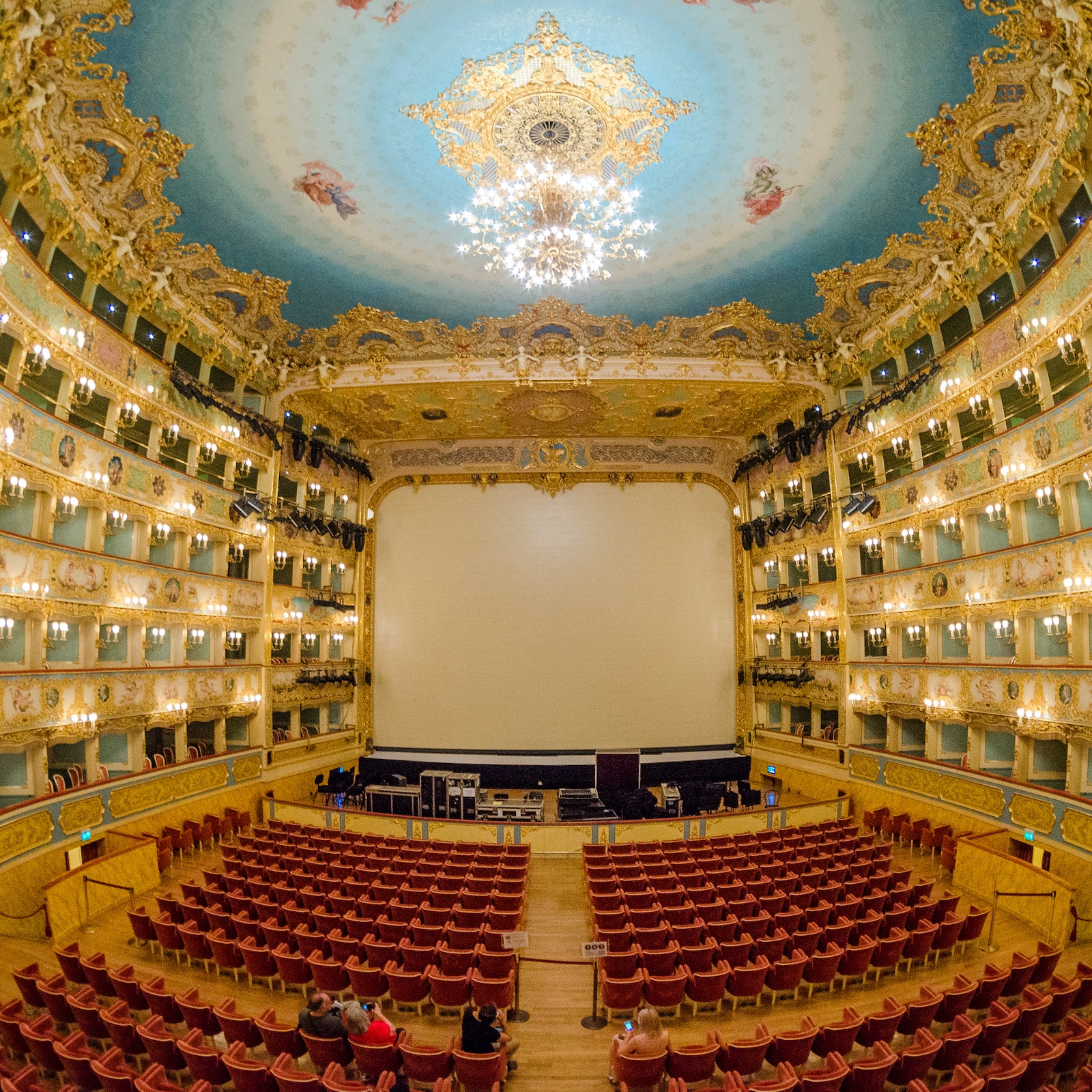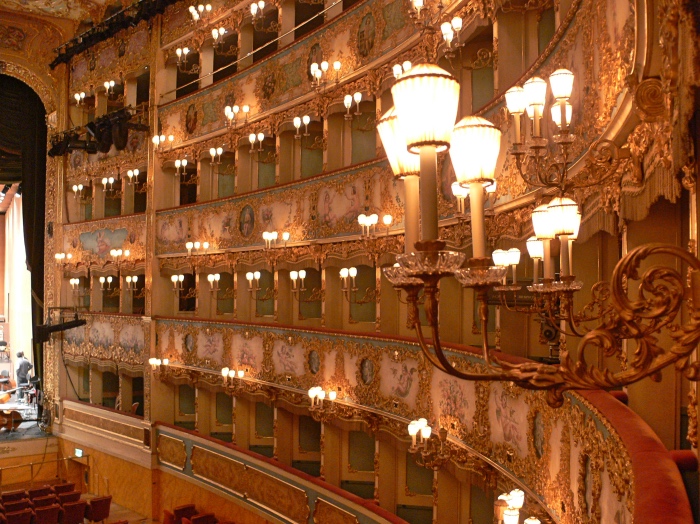How to visit the La Fenice theatre in Venice

The history of the lagoon city is closely intertwined with that of music and the perfect example of this union is the La Fenice Theatre, located in the Sestiere di San Marco in Venice. The neoclassical theatre, destroyed and rebuilt several times during its history, was the stage for world premieres in the 18th and 19th centuries and is still today one of the temples of opera music, with more than a hundred performances scheduled every year. Visiting it is a unique experience and allows you to discover another side of Venice, a city known the world over for its examples of Gothic and Byzantine art, such as St Mark’s Basilica and the Doge’s Palace with its Bridge of Sighs, but also for its music.
La Fenice Theatre: why visit it?

Tickets to the Teatro La Fenice give access to a true place of worship for music and opera lovers. Commissioned by the Noble Society of the Palchettisti following their ousting from the Teatro San Benedetto, it was inaugurated in 1792 and during the 19th and 20th centuries hosted world premieres of operas by Rossini, Verdi, Stravinsky and Prokof’ev.
Priority access allows you to skip the queue and includes an audio guide that will introduce you to the theatre’s history. Inside there is also an exhibition on the Venetian years of soprano Maria Callas. The foyer and opera house are also accessible by wheelchair, as are the Sale Apollinee, which can be reached via a lift. The ticket cannot be rescheduled but an option can be selected to cancel it by 23:59 the day before the visit, which can be booked daily from 9:30 to 18:00.
With tickets for the La Fenice Theatre, you can see the stucco and gold decorations in the neoclassical style and the spaces where performances are held, which can seat more than a thousand spectators, as well as a 98-piece orchestra and a 66-piece choir.
Guided tour of La Fenice Theatre
With the ticket for the guided tour of the La Fenice Theatre, in one hour a guide will take you on a discovery tour of this theatre, which is still very active today, with more than one hundred opera performances a year and a focus on contemporary productions as well. The visit is also possible for wheelchair users and, in the event of unforeseen circumstances, cancellation and rescheduling is possible up to 24 hours in advance. For the guided tour of La Fenice Theatre the meeting point is in front of the theatre and the explanation given by the guide, available in several languages, takes place inside.
The very name of the theatre, despite the fact that it dates back to its foundation, can be considered representative of its history: like a phoenix rising from its ashes, it burnt down several times (in 1836 and even more recently, in 1996), only to be rebuilt according to the original late 18th-century design by Giannantonio Selva.
Combining a visit to La Fenice with other experiences
If the La Fenice Theatre is a true jewel of the lagoon city and a unique stop for opera fans and others, there are many places of interest not to be missed in Venice.
You can buy a combined entrance ticket for La Fenice Theatre and St Mark’s bell tower, one of the symbols of Venice, for example. Both tickets allow you to skip the queue at the entrance and include a downloadable audio guide – you will, however, need to bring your own earphones to take advantage of this.
St. Mark’s bell tower is the tallest tower in Venice, and unlike many ancient bell towers, it has a lift, which allows even those in wheelchairs or with reduced mobility to climb to the top and enjoy the view, right where Galileo Galilei made the first demonstration with his telescope.
While the La Fenice Theatre was built at the end of the 18th century, the bell tower dates back to the 16th century and at the time also served as a lighthouse for boats arriving in Venice, by virtue of its location right next to the water. It is open in summer every day from 9:30 a.m. to 8:45 p.m. and in winter from 9:30 a.m. to 6 p.m., and when purchasing your ticket you can select the option with cancellation and refund by 11:59 p.m. on the day before booking.
If contemporary art fascinates you more than Gothic and Byzantine art, you can instead combine your ticket to the La Fenice Theatre with entry to the 18th International Architecture Exhibition of the Venice Biennale, one of the oldest and most important art events in the world.
Founded in 1895 as the International Art Exhibition, over time various sectors were added, such as music, film, dance, and, in 1980, architecture. The architecture exhibition, this year titled ‘The Laboratory of the Future’ and curated by Lesley Lokko, takes place between the Giardini and the Arsenale della Biennale, which are a ten-minute walk from each other, and is open from Tuesday to Sunday from 11 a.m. to 7 p.m., with Monday being the closing day.
This year there are 89 participating artists, and more than half are African or born of the African diaspora, consistent with the chosen theme, which focuses on carbon neutrality, decolonisation and decarbonisation. The exhibition opened at the end of May and will run until 26 November; tickets cannot be refunded or rescheduled.
Finally, if it is music that excites you the most, you can buy a ticket for the La Fenice Theatre and a concert in the Vivaldi Church. The latter, also called the Church of the Pietà or Santa Maria della Visitazione, is named after the famous composer because it was here that he composed his music.
The concert of Vivaldi’s ‘Four Seasons’ is performed by one of the most prestigious ensembles, I Virtuosi italiani, in this atmospheric venue that dates back to the 18th century. The doors open about half an hour before the concert and it is possible to enter up to five minutes earlier. Cancellations and rescheduling are possible until 23:59 on the day before booking.
Follow me on:
About me
In this blog, I don't explain the history of art — I tell the stories that art itself tells.


